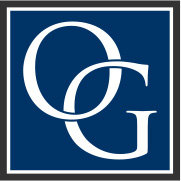The United States Patent Office (USPTO) implemented a “Micro Entity” applicant status pursuant to the 2011 America Invents Act (AIA). This rule allows qualifying applicants to receive a 75% fee reduction of certain fees—including fees for filing, searching, examining, issuing, appealing, and maintaining patent applications and issued patents. See the USPTO Fee Schedule for a complete listing of fees.
An applicant may qualify for “Micro Entity Status” based on: (1) experience and gross income; or (2) status as an Institution of Higher Education.
(1) Micro Entity Qualification Based on Experience and Gross Income:
An applicant must certify to the following four criteria:
- Small Entity Status: The applicant qualifies as a small entity under 37 C.F.R 1.27 (generally, an entity that has less than 500 employees, see 13 CFR 121.802); and
- No More than Four Previous Applications: The applicant or any joint inventor has not filed more than four previously filed US non-provisional patent applications (exceptions: applications filed in another country; international applications for which the National Stage fee 35 U.S.C. 41(a) was not paid – PCT applications which did not go past the International Stage; applications from a prior employment or assigned to the prior employer); and
- Gross Income Limitation: The applicant or any listed inventor did not have a gross income for the previous year that was greater than $184,116. The “Maximum Qualifying Gross Income” will change annually based upon median US household income. Check the current USPTO Qualifying Gross Income eligibility fee; and
- Grant of Rights (if any) must be to another Micro Entity: The applicant or any listed inventor has not promised, assigned, granted, or conveyed a license or other ownership interest (and is not obligated to do so) to a non-micro entity.
(2) Micro Entity Qualification for Institution of Higher Education Status:
An applicant must certify to one of the following criteria:
- Employee of Institution: The applicant is an employee of an Institution of Higher Education from which the applicant obtains the majority of the applicant’s income—(Institution of Higher Education as defined in Section 101(a) of the Higher Education Act of 1965 (20 U.S.C. 1001(a)) (not the same as a “not for profit” or school); or
- Grant of Rights to Institution: The applicant has assigned, granted, or conveyed a license or other ownership interest (or is obligated to do so) directly to the Institution of Higher Education itself (not a research institute, foundation or technology transfer office). ** Under the current USPTO rules, an assignee can be listed as the named application, however, in order to qualify for reduced micro entity fees, an Institution of Higher Education (with current or promised ownership interest) should list the inventors as the named as applicants until discrepancies in the law are resolved.
Moving forward, applicants can secure (or lose) reduced fees at anytime throughout the life of a filed application or issued patent. Keep in mind that each time fees are paid the applicant must certify that it has “Micro Entity” status. Therefore, it’s best to conduct to review of these requirements prior to each fee filing.
For more information on this topic, please contact Pamela K. Riewerts, Esq. (U.S. Registered Patent Attorney) at pamela@olivergrimsley.com
